Australian Tropical Rainforest Plants - Online edition
Syzygium malaccense (L.) Merr. & L.M.Perry
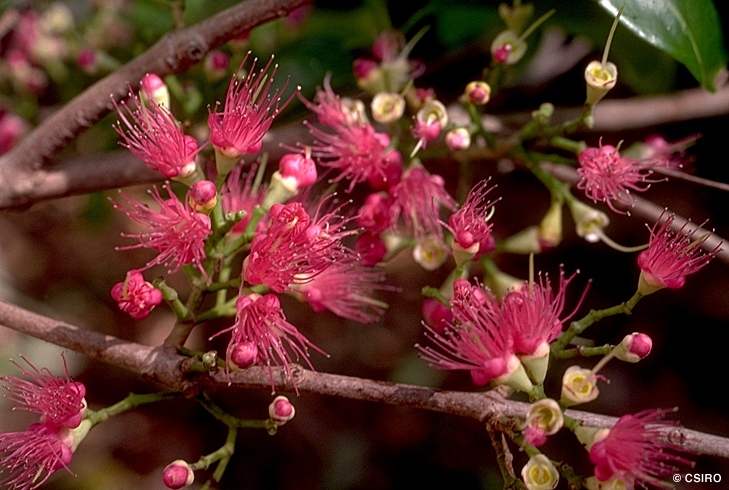

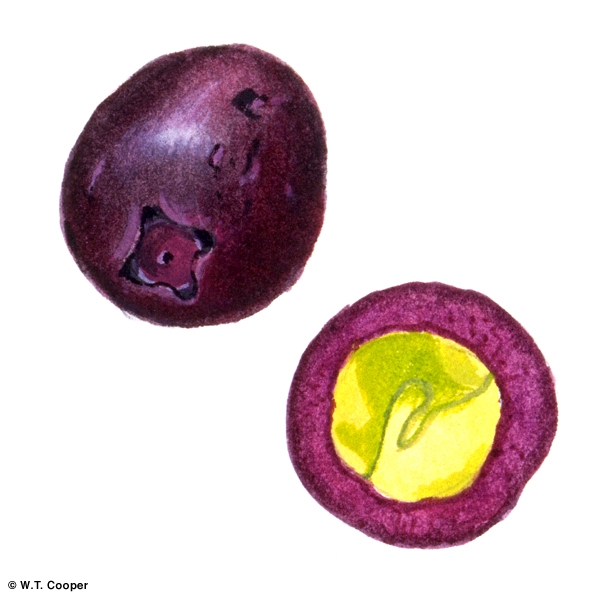

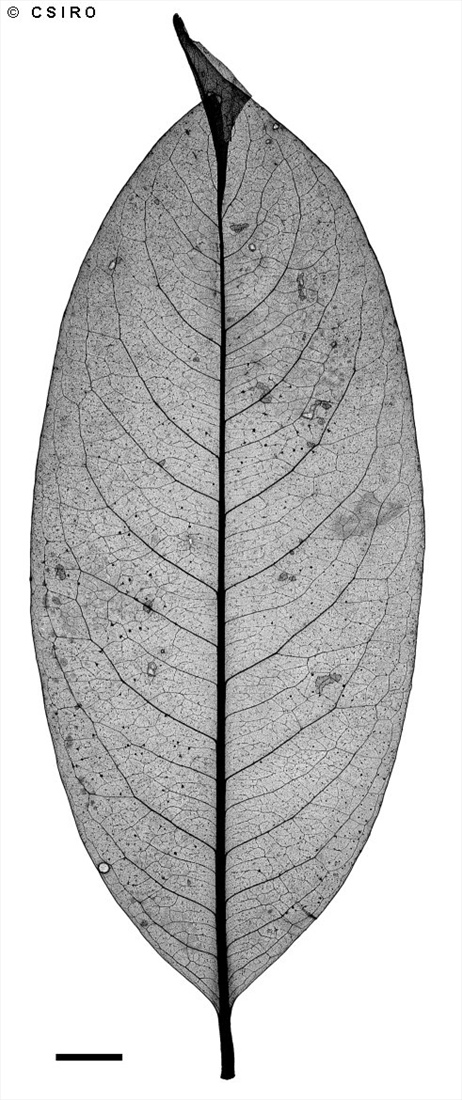
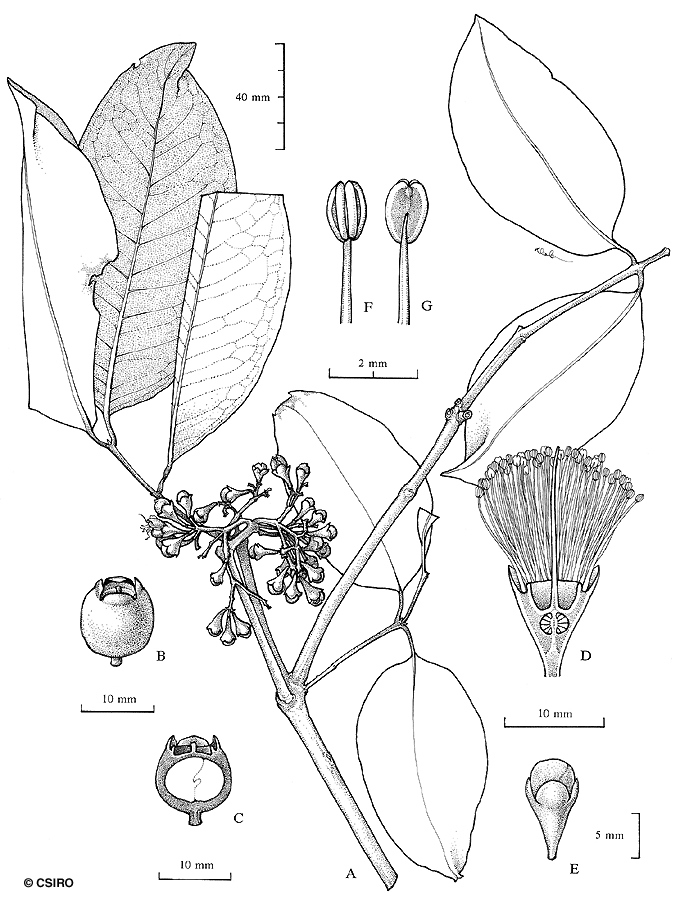
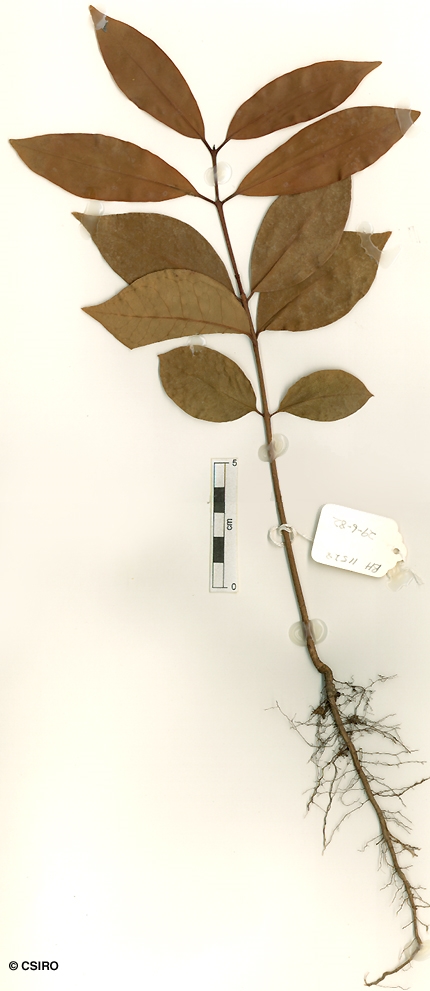

Merrill, E.D. & Perry, L.M. (1938) Journal of the Arnold Arboretum 19: 215.
Apple, Malayasian; Satinash, Pink; Pink Satinash; Malay Apple; Apple, Malay; Malayasian Apple
Bark pale brown. Blaze odour resembling that of dried apples (Pyrus malus).
Leaf blades about 11-15 x 4-7 cm, petioles about 0.8-1.5 cm long. Oil dots usually rather sparsely distributed, visible with a lens or just visible to the naked eye. Midrib slightly depressed on the upper surface towards the base. Lateral veins not really forming an intramarginal vein.
Inflorescence on branches below or back from the leaves, bracts deciduous, absent at anthesis. Calyx tube (hypanthium) + pedicel about 6-9 mm long, calyx tube (hypanthium) about 4-8 mm diam., calyx lobes dimorphic, inner lobes larger, rounded, about 2-4 mm long. Petals concave, +/- orbicular, about 6-9 mm diam., oil dots readily visible, about 100 or more per petal. Outer staminal filaments about 10-18 mm long, anthers about 1-1.4 x 0.7-1.2 mm, gland comparatively small, terminal, near the back of the anther. Ovules about 30-35 per locule, placentas central, ovules radiating, ascending. Style about 18-25 mm long, generally exceeding the stamens.
Occurs in CYP and NEQ. Altitudinal range from sea level to 100 m. Grows in dry rain forest but is more frequently found in gallery forest. Also occurs in Malesia where it is widely cultivated.
A very showy tree that deserves place in tropical horticulture. Flowers can be white to cream to pink or purple. In SE Asia, selected trees are sometimes grown for the edible fruits.
This species may have medicinal properties. (http://www.dittmar.dusnet.de/english/esyzyma.shtm l)
This is a rare species in Australia and has not been used commercially. It is usually a well formed tree and would probably produce a useful structural timber. Wood specific gravity 0.87. Hyland (1983).





